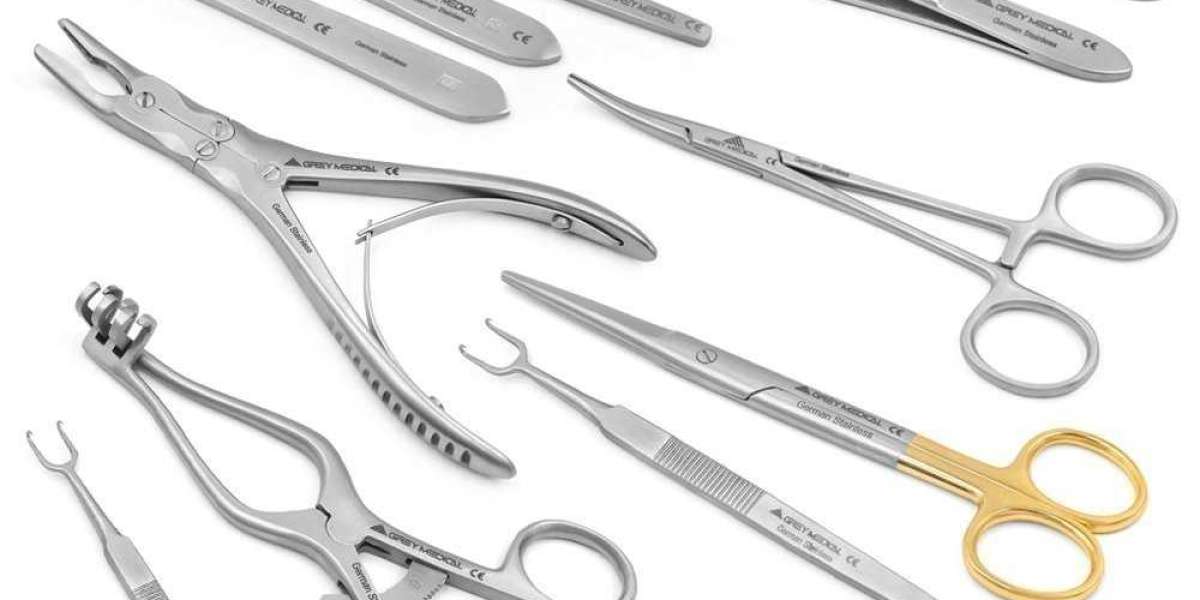Every successful surgical procedure relies on precision, skill, and the right tools. Basic surgery instruments form the cornerstone of medical practice, enabling surgeons to perform life-saving procedures with accuracy and confidence. From the operating room to emergency medicine, understanding these fundamental tools is crucial for healthcare professionals and anyone interested in the medical field.
The evolution of surgical instruments has transformed modern healthcare, making complex procedures safer and more effective. These tools represent centuries of medical innovation, refined through countless procedures and technological advances. Today's basic surgery instrumentscombine time-tested designs with cutting-edge materials and manufacturing techniques.

Understanding the Foundation of Surgical Practice
Modern surgery depends entirely on having the right instruments for each specific task. These surgical tools must meet exacting standards for sterility, durability, and precision. Unlike everyday tools, surgical instruments undergo rigorous testing and quality control measures to ensure they perform flawlessly when lives depend on them.
The design of each instrument reflects its specific purpose. Surgeons require tools that provide excellent control, clear visibility, and reliable performance throughout lengthy procedures. Every curve, edge, and surface serves a deliberate function, optimized through decades of surgical experience and medical research.
Manufacturing quality directly impacts patient outcomes. Premium surgical instruments maintain their sharpness longer, resist corrosion better, and provide consistent performance across thousands of procedures. This reliability allows surgeons to focus entirely on their patients rather than worrying about instrument failure.
Essential Cutting Instruments
Scalpels represent the most recognizable surgical tool, designed for precise incisions through various tissue types. Modern scalpel handles accommodate disposable blades in multiple sizes, allowing surgeons to select the perfect blade for each specific cut. The ergonomic design ensures comfortable grip during extended procedures while maintaining complete control over cutting depth and angle.
Surgical scissors come in numerous specialized designs, each optimized for specific tasks. Mayo scissors handle heavy cutting duties, while Metzenbaum scissors provide delicate tissue dissection. The curved and straight variations offer different approaches to accessing surgical sites, giving surgeons flexibility in their technique.
Bone cutting instruments include rongeurs and bone cutters, essential for orthopedic and neurosurgical procedures. These robust tools must withstand significant force while maintaining precision. Their specialized jaws and cutting edges are engineered to handle dense bone tissue without dulling or breaking.
Grasping and Holding Instruments
Forceps serve as the surgeon's extended fingers, providing secure grip on tissues, sutures, and other materials. Toothed forceps offer firm hold on tough tissues, while smooth forceps handle delicate structures without causing damage. The variety of tip designs accommodates different tissue types and surgical approaches.
Hemostats control bleeding by clamping blood vessels temporarily. These locking instruments free the surgeon's hands for other tasks while maintaining pressure on bleeding sites. Different sizes handle vessels ranging from tiny capillaries to major arteries, making them indispensable in virtually every surgical procedure.
Needle holders combine the functions of forceps and scissors, designed specifically for suturing. Their specialized jaws grip suture needles securely while allowing precise control during tissue closure. Quality needle holders maintain their grip strength through thousands of uses, ensuring consistent suturing performance.
Retraction and Exposure Tools
Retractors create and maintain surgical exposure by holding tissues away from the operative site. Hand-held retractors offer immediate control but require an assistant, while self-retaining retractors lock into position and free up surgical team members for other tasks.
Richardson retractors provide excellent exposure for abdominal procedures with their broad, curved blades. Army-Navy retractors offer versatility in smaller incisions, while Weitlaner retractors combine self-retention with excellent tissue protection through their curved design.
Proper retraction prevents tissue damage while maximizing surgical access. Basic surgery instruments in this category must balance firm tissue hold with gentle pressure, avoiding unnecessary trauma to surrounding structures.
Specialized Probing and Measuring Instruments
Surgical probes allow exploration of wounds, cavities, and anatomical structures without causing additional trauma. These smooth, rounded instruments help surgeons assess tissue depth, locate foreign objects, and evaluate internal structures through palpation.
Rulers and calipers provide precise measurements during procedures, essential for implant placement, tissue removal margins, and anatomical assessments. Accurate measurement tools ensure procedures meet exact specifications, particularly important in reconstructive and oncological surgery.
Directors and grooved probes guide other instruments along predetermined paths, reducing the risk of inadvertent tissue damage. These specialized tools enhance surgical precision by providing controlled access to difficult anatomical areas.
Quality Standards and Material Considerations
Basic surgery instruments must meet stringent quality standards established by regulatory bodies worldwide. These standards cover everything from raw materials to final inspection, ensuring instruments perform reliably in clinical settings. Stainless steel remains the preferred material for most instruments due to its corrosion resistance, strength, and sterilization compatibility.
Surface finishing affects both performance and cleaning efficiency. Mirror-polished surfaces resist bacterial adhesion and facilitate thorough sterilization, while textured surfaces provide enhanced grip where needed. The balance between functionality and hygiene drives design decisions throughout the manufacturing process.
Testing protocols verify that instruments meet performance specifications before reaching healthcare facilities. These tests include dimensional accuracy, material composition, and functional performance under simulated surgical conditions.
Maintenance and Sterilization Requirements
Proper instrument care extends service life and ensures patient safety. Immediate cleaning after use prevents blood and tissue from adhering to instrument surfaces, which can harbor bacteria and cause corrosion. Ultrasonic cleaning removes debris from intricate surfaces and joint mechanisms.
Sterilization protocols must eliminate all microorganisms while preserving instrument integrity. Steam sterilization remains the gold standard for most basic surgery instruments, providing reliable microbial kill while being environmentally friendly. Alternative methods accommodate heat-sensitive materials when necessary.
Regular inspection identifies instruments requiring repair or replacement before they fail during procedures. Sharp instruments maintain their cutting efficiency longer with proper care, while moving parts benefit from appropriate lubrication and adjustment.
Conclusion
The foundation of successful surgery rests on having reliable, precisely manufactured instruments that surgeons can trust completely. Basic surgery instruments represent far more than simple tools – they embody centuries of medical knowledge, engineering excellence, and unwavering commitment to patient care.
At GreyMedical®, we understand that surgical instruments are extensions of the surgeon's skill and dedication. Our privately owned medical technology company remains committed to innovation and excellence in the craft of surgical instruments, ensuring that healthcare professionals have access to the finest tools available. Through continuous research, development, and quality improvement, we support the medical community's mission to save lives and restore health, one procedure at a time.



